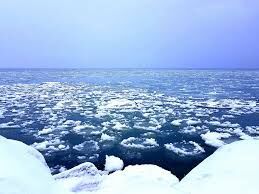Mass Extinctions: Disasters or Opportunities?
- Dana Frank
- Articles
- 3 minutes (634 words)
It’s probably not comforting for a species close to its expiration date that its elimination is actually a prime chance to extend the colour palette of diversity in the grand painting that is the natural world. Unfortunately, science was never meant to be reassuring. Either way, mass extinctions are the focal points of adaptive radiation, a process by which abundant niches become vacant in an accelerated period allowing other species to fill them and evolve accordingly.
The seemingly bleak and undeniably horrific scene that accompanies global extermination is difficult to perceive optimistically. But in fact, extinctions act as disruptions in static periods of taxonomic dominion and allow for a thorough leveling of the playing field, as it were. Quite like plot twists in a novel, mass extinctions make the story just a bit more interesting (with the understated condition that you aren’t present when one is in progress).
So when thinking about the End Ordovician period and the farewell the earth was required to bid to the trilobites, it is vital to remember the indirect consequences it lent to evolutionary advancement. Extinctions are for the common good because the tragedy they cause is always compensated for by interesting, new developments.
But in order to even classify five major extinctions, you are required to ‘simplify’ a bit. First, you need to ignore any living thing under 5 micrometres. It is not possible to consider Earth's entire biosphere because of how irritating it is to look at microbial fossils. Instead, we simply decide to exclude them.
Next, you need to choose a time frame, a similarly challenging endeavour. The End Devonian extinction, with an estimated duration of 500 000 to 25 MILLION years, should demonstrate how bad an impression we have for geological time. There frankly isn’t much to know about this extinction at all except how little there is to know about it. All we are certain of is the result, where close to 86 per cent of species were wiped out in its stretch. Hopefully, that speaks for itself, even if the cause for it isn’t entirely clear.
The End Permian extinction was rather a bit worse, I’m afraid. It devastated life on Earth by wiping out just over 96% of all species in existence at that time, more than any other extinction on the planet. It really was the most fantastic combination of ill-fortune with several detriments beginning and ending at the same time, ranging from volcanism to meteor impacts. After this, life was almost finished, and pretty much nothing looked the same when it was over, which made for a fairly grim outlook in the years to follow.
Not too many million years later came the K-Pg extinction, which is quite famous but perhaps for the wrong reason. After the End-Triassic, dinosaurs were the central performers on life’s stage, and this persisted for a long time indeed. Meanwhile, our ancestors were not more impressive than a modern shrew or vole, occupying a pathetic and underwhelming position in the Cretaceous food chain. This all changed quite suddenly, with what we assume was the fault of asteroids, and with the abrupt availability of niches, mammals rose through the cracks. All it took was some adaptation and no more than 100 million years, to give rise to us, among others. All of which we owe to the murder of our beloved Dinosaurs.
You see, mass extinctions are a two-sided affair. During a mass extinction, nature hits a reset button and progress is reversed. But amid the devastation and chaos, there is beauty if you’re patient enough to wait for it. The swift sort of adaptation that follows is the crown jewel of the evolutionary process. It is the climax in an epic story.


Comments
Log in to read and post comments